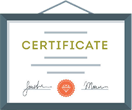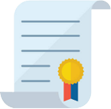Live Project Based Ansys training in Mohali
 4.9 out of 5 based on 7988 Students review.
4.9 out of 5 based on 7988 Students review. KVCH provides the Best training in ANSYS in Mohali, that helps an individual to gain advantage in the industry and secure the best opportunities in the market . ANSYS Training program is designed for both students and working professionals to gain insight and experience the world of technology.
There is an increase in demand for the software engineers and companies are looking to hire the best candidates in the market. Being professionally qualified and skilled in a technology provide a candidate with better chances to land on their dream jobs .
KVCH has well-equipped resources and high tech infrastructure that enables the student to take lead in the industry by working on LIVE projects . ANSYS consist of various modules that provide knowledge and learning on various essential components of ANSYS like ANSYS Architecture , Graph Programming , Introduction to files- .dat and .dml , Partition and Departition Components , Database Components , Translate Components and many more concepts .Also students gets to work on the latest Live projects under the guidance of our industrial experts which help them to grab better understanding of technology.
The training provides a career edge to the students and working professional who looking for great career growth. As the competition in the industry its extensive it becomes essential for the aspirants to upgrade themselves regularly as per the changing needs of the industry.
Benefits

Accredited Curriculum

Learn from the Experts

Professional Certificate

Guranteed Career Growth

Placement Assistance

Earn a Valuable Certificate
Course Description
- What is FEA?
- About ANSYS
- ANSYS Basics
- ANSYS Workbench Environment
- The GUI
- Graphics and Picking
- The Database and Files
- Saving Files
- Exiting ANSYS
- File Types
- Overview
- Preliminary Decisions
- Preprocessing
- Solution
- Post processing
- Direct Generation vs. Solid Modeling
- Direct Generation
- Creating nodes and elements
- Filling between nodes
- Setting Element Attributes
- Bottom up
- Using key points
- Using lines, splines & arcs
- Using areas and volumes (arbitrary)
- Top Down
- Creating rectangle, circle, polygon, block, cylinder, prism, sphere, cone and
- torus.
- Concepts of hard points, line fillets and area fillets.
- Intersect
- Add
- Subtract
- Overlap
- Glue
- Divide
- Global & Local
- Active coordinate system
- Creating a new working plane
- Moving and rotating the working plane
- Copy
- Reflect
- Move/ Modify
- Scale
- Sweeping key points along a trajectory to create lines
- Revolving key points about an axis to create arcs or full circles, normal to
- The axis
- Sweeping lines or splines along a trajectory to get areas
- Revolving lines, splines or arcs about an axis to create cylindrical areas.
- Giving depth to an area to create a volume, normal to the area
- Creating a volume with tapered faces
- Sweeping an area along a trajectory to create a volume
- Revolving an area about an axis to create a cylindrical volume
- Extending Lines
- Modifying an existing line by extending that line to a desired length
- Creating a new line on the basis of an existing line, where the existing line
- Will not be modified.
- Meshing
- One Dimensional Element
- Two Dimensional Elements
- Two and Half Dimensional Elements
- Three Dimensional Elements
- Quadrilateral Elements
- Triangular Elements
- Brick Elements
- Tetrahedral Elements
- Shell Elements
- Mapped and free meshing
- How to control mesh size?
- How to use Mesh Tool?
- Concatenation and its significance
- Clearing mesh and re-meshing
- Some useful meshing techniques
- Merging Coincident Points
- Compressing Item Numbers
- Setting Start Number & viewing Start Number Status
- Adding Number Offset
- What is coupling and how to create coupled sets of nodes Static Structural Analysis Modal Analysis Thermal Analysis.
- DesignModeler
- Basics of Finite Element Analysis(Optional)
- Introduction to FEA
- Stages of FEA
- ANSYS Workbench Interface
- Getting Started with ANSYS Workbench
- Project Page and File Management
- DesignModeler
- Why DesignModeler?
- Graphical User Interface
- Design Principles
- Parameters in DesignModeler
- Concept Modeling
- Advanced modeling features
- Simulation
- Introduction
- Analysis disciplines
- Planning of Analysis
- Simulation Basics
- Graphical User Interface
- Idealization
- Material Parameters
- Descritization: Mesh Control, Mesh Study, Mesh Quality.
- Boundary Conditions
- Analysis settings
- Post-processing
- Structural and Thermal Analysis
- Buckling Analysis
- Modal Analysis
- Thermal Analysis
- Non-linear statics